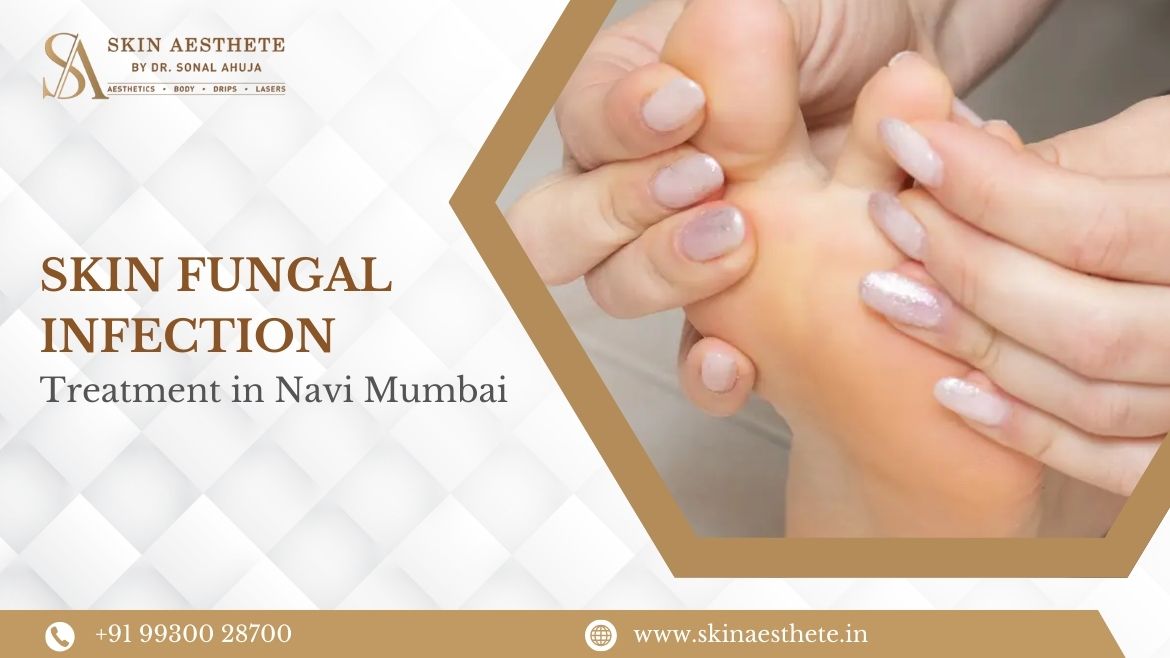




Did you know that everyday nuisances like dandruff, diaper rash, and athlete's foot are actually forms of fungal infections? It might surprise you to learn that according to research published in The Lancet, over a billion people around the globe grapple with these bothersome issues.
While many of us think of them as mere annoyances, some fungal infections can escalate into serious, even life-threatening conditions.
Picture this: A tiny fungus causing a widespread epidemic of discomfort, often going unnoticed in our busy lives. Whether it’s that itchy scalp or the rash that just won’t quit, these infections often slip under the radar.
In a world where we’re quick to treat a headache or sniffle, it’s remarkable how we overlook the impact of fungi on our health. It’s time to shed light on these hidden foes and understand their potential consequences!
This blog by Skin Aesthete, a renowned skin clinic in Belapur Navi Mumbai, highlights the types, causes, and treatment of skin fungal infections.
Fungal skin infections are caused by various fungi, typically thriving in moist, warm areas of the body, including:
Between the toes
Under the breasts
In skin folds like armpits
The main culprits are yeast and dermatophytes (fungi that affect the skin, hair, and nails). Factors like poor hygiene and living in hot, humid environments can increase the risk of infection.
While most fungal infections are not life-threatening, some are contagious and can lead to complications if left untreated.
Treatment for skin fungal infections involves:
Topical antifungal creams: Often prescribed by dermatologists to effectively target the infection.
Prescription-strength medications: These offer quicker results for more persistent cases.
Oral antifungal medications: Recommended for severe or widespread fungal infections to address the issue internally.
A fungal infection affecting the feet, commonly seen in people who wear tight shoes or walk barefoot in damp public areas like pools or locker rooms.
Symptoms:
Itching, burning, or stinging between the toes
Redness, blisters, or cracked skin
Dry, flaky patches
Caused by Candida, these occur in warm, moist areas of the body or in individuals with diabetes or obesity.
Types and Symptoms:
Skin yeast infections: Rash, itching, and clear-fluid bumps
Nail infections: Thick, discolored nails with possible pain and pus
Oral thrush: White patches in the mouth, soreness, and burning
Vaginal yeast infections: Itching, redness, abnormal discharge
Despite its name, ringworm is a fungal infection presenting as a red, ring-shaped rash that is itchy and scaly. It commonly spreads through direct contact or contaminated items.
Variants:
Body ringworm: Circular, itchy rashes on arms, legs, or trunk
Scalp ringworm: Scaly, itchy patches that may cause hair loss
You may be at higher risk for fungal infections if you:
Live in warm, humid areas
Share personal items like towels or shoes
Wear tight clothing or synthetic fabrics
Have diabetes, obesity, or a weakened immune system
Here’s how to reduce your risk of fungal infections:
1. Keep your skin dry, especially in folds and between toes
2. Regularly shampoo and maintain scalp hygiene
3. Avoid sharing personal items like towels or footwear
4. Wear breathable shoes and socks, and change socks frequently
5. Use antifungal powders if you sweat excessively
6. Choose loose-fitting cotton clothes and undergarments
If symptoms persist or worsen, consult a dermatologist and do not rely on over-the-counter treatments. For immunocompromised individuals, medical intervention is crucial to prevent deeper infections. If you are looking for a skin clinic in Belapur Navi Mumbai, look no further than Skin Aesthete, led by Dr. Sonal Ahuja.